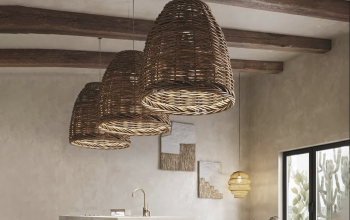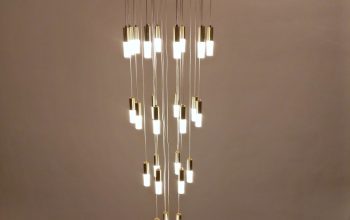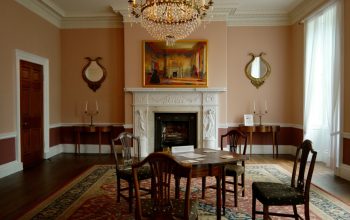Lighting is a critical element in shaping the atmosphere of any environment. It has the ability to transform spaces, enhancing their visual appeal and functionality. Proper lighting design considers the purpose of the area, the activities it will accommodate, and the desired ambiance.
For instance, kitchens require bright illumination for tasks, while bedrooms benefit from softer lighting to promote relaxation. In commercial settings, lighting plays a significant role in influencing customer behavior and experience. Retail spaces use strategic lighting to highlight products and create an inviting atmosphere, while restaurants employ lighting to set the mood for different dining experiences.
The impact of lighting Vvvov extends beyond aesthetics to affect human well-being. Research has shown that exposure to natural light can positively influence mood and productivity. Conversely, poor lighting choices, such as harsh fluorescent lights, can negatively impact comfort and energy levels.
Effective lighting design involves careful selection and placement of fixtures to create visually appealing and comfortable environments. By considering factors such as light intensity, color temperature, and distribution, designers can craft spaces that are both functional and conducive to occupant well-being.
Choosing the Right Lighting Fixtures for Your Space
Functionality and Purpose
The primary consideration is the function of the space. Different activities require distinct types of lighting. Task lighting is essential in areas where work or reading will take place, while ambient lighting is vital for creating a warm and inviting atmosphere in living spaces. By determining the function of the space, you can choose fixtures that cater to those needs.
Style and Aesthetic
The lighting fixtures you select should harmonize with the overall design aesthetic of the room. For instance, a sleek, modern pendant light might be perfect for a contemporary kitchen, while a vintage chandelier could be the ideal focal point for a traditional dining room.
Size, Scale, and Sustainability
The size and scale of the fixtures are also crucial. A small pendant light might get lost in a large, open-concept living area, while an oversized chandelier could overwhelm a small bedroom. Furthermore, it’s essential to consider energy efficiency and sustainability when choosing lighting fixtures. LED lights are an excellent choice for their energy efficiency and long lifespan. Additionally, there are many stylish and eco-friendly options available, such as fixtures made from recycled materials or those designed for easy disassembly and recycling at the end of their life.
Using Different Types of Lighting to Enhance Ambiance
There are three main types of lighting that work together to create a well-balanced and inviting atmosphere: ambient, task, and accent lighting. Ambient lighting provides overall illumination for a space and sets the tone for the room. This can be achieved through ceiling-mounted fixtures, chandeliers, or wall sconces.
Task lighting is focused on specific areas where activities such as reading, cooking, or working take place. This type of lighting is typically provided by desk lamps, under-cabinet lights, or pendant lights. Accent lighting is used to highlight specific features or create visual interest in a space.
This can be achieved with track lighting, recessed lights, or picture lights. By using a combination of these three types of lighting, you can create a dynamic and visually appealing environment that is both functional and inviting. For example, in a living room, ambient lighting can be provided by a central ceiling fixture or wall sconces, while task lighting can be added with floor lamps or table lamps near seating areas.
Accent lighting can be used to highlight artwork or architectural features such as a fireplace or built-in shelving. It’s important to carefully consider the placement and intensity of each type of lighting to ensure that they work together harmoniously. Too much ambient light can make a space feel harsh and unwelcoming, while too little task lighting can make it difficult to perform everyday activities.
By carefully balancing these different types of lighting, you can create an environment that is both functional and visually appealing.
Incorporating Dimmers and Smart Lighting for Versatility
One way to enhance the versatility of your lighting design is by incorporating dimmers and smart lighting controls. Dimmers allow you to adjust the intensity of your lights to suit different activities and moods. For example, you can dim the lights for a cozy movie night or brighten them for a lively gathering with friends.
Smart lighting controls take this flexibility to the next level by allowing you to adjust your lights remotely using a smartphone or tablet. This can be especially useful for adjusting lights in hard-to-reach places or for creating custom lighting scenes for different occasions. In addition to enhancing versatility, dimmers and smart lighting controls can also help save energy and extend the lifespan of your light bulbs.
By dimming your lights when full brightness is not needed, you can reduce energy consumption and lower your electricity bills. Smart lighting controls also allow you to schedule your lights to turn on and off at specific times, ensuring that they are not left on when not needed. When incorporating dimmers and smart lighting controls into your space, it’s important to choose fixtures and bulbs that are compatible with these technologies.
Many LED fixtures are dimmable, but it’s important to check the specifications before making a purchase. Additionally, smart bulbs and fixtures often require a compatible hub or bridge to connect to your home’s Wi-Fi network, so it’s important to consider this when planning your lighting design.
Adding Decorative Elements to Enhance the Ambiance
In addition to providing illumination, lighting fixtures can also serve as decorative elements that enhance the ambiance of a space. From elegant chandeliers to sleek pendant lights, there are countless options available to add visual interest and style to your space. When choosing decorative lighting fixtures, it’s important to consider the overall design aesthetic of the room and select fixtures that complement it.
Chandeliers are a classic choice for adding drama and elegance to a space. They come in a wide range of styles and sizes, making them suitable for everything from grand entryways to intimate dining rooms. Pendant lights are another versatile option that can add personality and style to a room.
They come in an array of shapes, colors, and materials, making it easy to find the perfect fixture for any space. In addition to overhead fixtures, decorative wall sconces can add charm and character to a room while providing functional illumination. These fixtures come in a variety of styles, from traditional candle-style sconces to sleek modern designs.
By carefully selecting decorative lighting fixtures that complement the overall design aesthetic of your space, you can create an environment that is both visually appealing and inviting.
Using Lighting to Create a Relaxing and Cozy Atmosphere
Color Temperature Matters
When designing a space with relaxation in mind, it’s important to consider the color temperature of your light bulbs. Warm white or soft white bulbs (measured in Kelvins) are ideal for creating a cozy atmosphere, while cool white bulbs can make a space feel more clinical and less inviting.
Placement of Lighting Fixtures
In addition to color temperature, the placement of lighting fixtures is also important for creating a relaxing atmosphere. Soft, indirect light can create a sense of warmth and comfort, while harsh overhead lighting can make a space feel cold and unwelcoming. Floor lamps with fabric shades or table lamps with soft bulbs are excellent choices for creating gentle, diffused light that adds to the cozy ambiance of a room.
The Power of Candles
Another way to enhance relaxation with lighting is by incorporating candles or flameless LED candles into your design. The soft flickering light of candles can create a calming atmosphere that is perfect for unwinding after a long day. Whether used on their own or in combination with other light sources, candles can add an extra layer of coziness to any space.
Tips for Successfully Incorporating Pretty Lighting into Your Space
When incorporating pretty lighting into your space, it’s important to consider both form and function. While decorative fixtures can add visual interest and style to a room, they should also provide adequate illumination for the activities that will take place there. It’s important to strike a balance between aesthetics and functionality when choosing pretty lighting fixtures.
Another tip for successfully incorporating pretty lighting into your space is to consider scale and proportion. A large chandelier might be stunning in a grand entryway but overwhelming in a small dining room. Similarly, tiny pendant lights might get lost in a large living area but be perfect for illuminating a cozy reading nook.
By carefully considering the scale of your fixtures in relation to the size of the room, you can ensure that they make an impact without overpowering the space. Finally, it’s important to consider maintenance when choosing pretty lighting fixtures. Some decorative fixtures can be difficult to clean or require frequent bulb changes, so it’s important to consider this when making your selection.
Additionally, it’s important to choose fixtures that are durable and well-made to ensure that they will stand the test of time. In conclusion, lighting plays a crucial role in creating ambiance in any space. By carefully considering the function of the space, choosing the right fixtures, using different types of lighting strategically, incorporating dimmers and smart controls for versatility, adding decorative elements for visual interest, creating a relaxing atmosphere with cozy lighting, and following tips for successfully incorporating pretty lighting into your space, you can create an environment that is both visually appealing and inviting while enhancing comfort and well-being.



